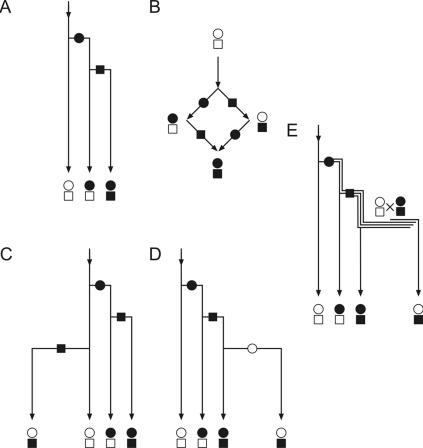Figure 3. .
Schematic representation of different theoretical scenarios that result in reticulation. A, Standard phylogenetic tree. Two sequential mutations create three different types of genomes (no reticulation). In some cases, all four possible combinations of the two mutations are present in a population (B). Then they have to be formally related by a nontree network structure (reticulation). The square-shaped reticulations can be easily recognized within typical mtDNA phylogenetic trees.19,20 Reticulations are usually “resolved” into tree structures by the assumption of either recurrent mutations (C) or reverse mutations (D). We propose that, alternatively, reticulations can result from recombination of mtDNA in double-heteroplasmic individuals (E). The persistent heteroplasmy (double line) is switched to a triplasmic double-heteroplasmic state (triple line) by a second mutational event. Recombination can then create the fourth allelic combination that leads to reticulation.

